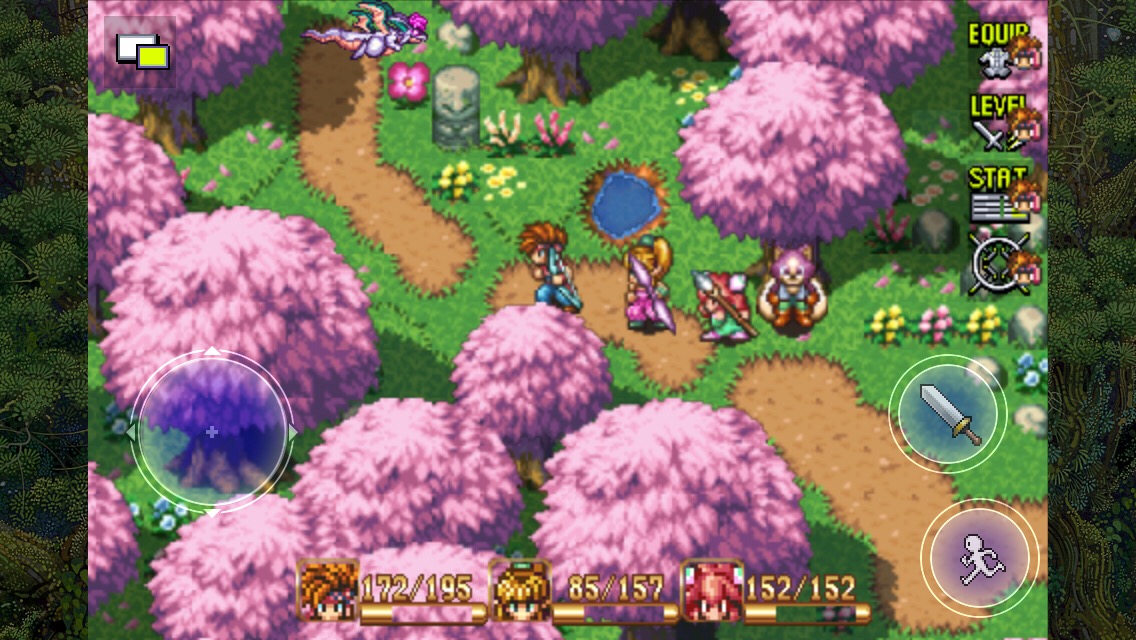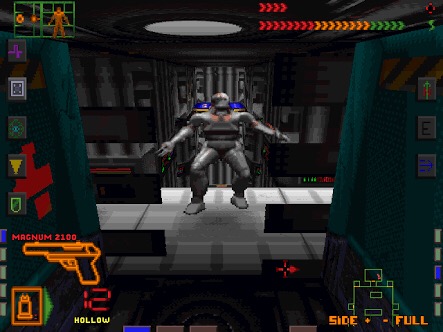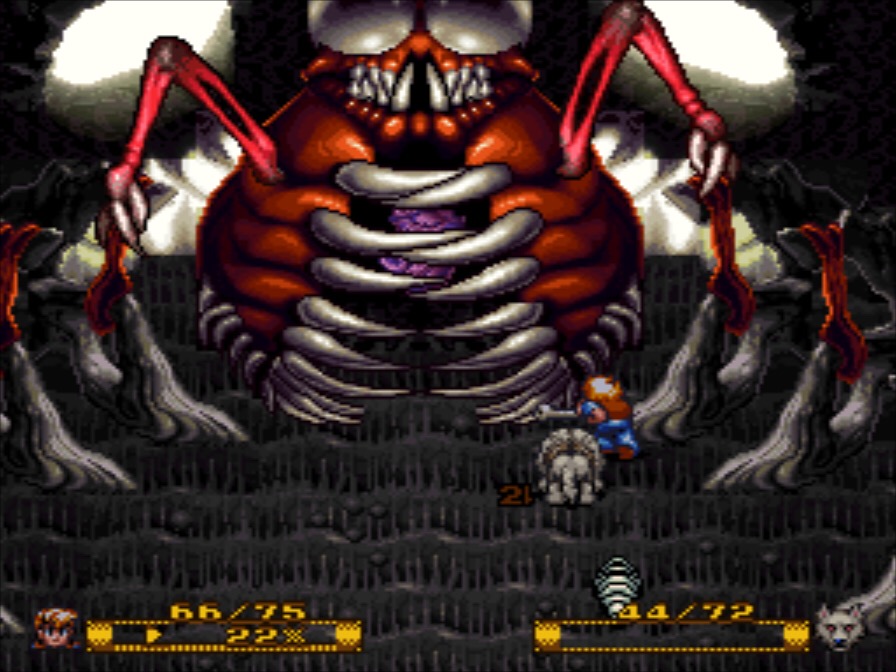 Hello, gentle readers, and welcome to the RPG Reload, the regular feature where we’re either playing gods or slaying gods. This week, we’re filling in the next chapter in our RPG Reload Glossary look at the history of action-RPGs. One of the messier and less-satisfying genre labels around, the action-RPG had already taken many forms by the end of the 1980s. In the next decade, some of the most successful examples of the genre would arrive on the scene. While you would think that might simplify matters, the 1990s closed with the genre being harder to nail down than ever. While I had intended to cover the entire decade in this installment, it became apparent halfway through that it was beyond the scope of a single article. So instead, we’re going to look at the first half of this formative decade and pick out some of the genre highlights along the way.
Hello, gentle readers, and welcome to the RPG Reload, the regular feature where we’re either playing gods or slaying gods. This week, we’re filling in the next chapter in our RPG Reload Glossary look at the history of action-RPGs. One of the messier and less-satisfying genre labels around, the action-RPG had already taken many forms by the end of the 1980s. In the next decade, some of the most successful examples of the genre would arrive on the scene. While you would think that might simplify matters, the 1990s closed with the genre being harder to nail down than ever. While I had intended to cover the entire decade in this installment, it became apparent halfway through that it was beyond the scope of a single article. So instead, we’re going to look at the first half of this formative decade and pick out some of the genre highlights along the way.
While the 1980s mostly belonged to Japan as far as the genre went, there were a few key Western games that would prove to be important inspirations for the coming decade. It’s worth pointing out that during much of the 80s, action games were seen by the bulk of the PC gaming audience in America as more childish fare best left to consoles and arcades. That antagonistic attitude was starting to cool a little as 1990 approached, and even RPG fans had seen the merits of games with faux-action components thanks to the seminal Dungeon Master.
 Meanwhile, over in Japan, the action-RPG genre’s pace was largely set by Nihon Falcom’s Dragon Slayer series. The smash success of those games, along with titles such as Namco’s Tower of Druaga, T&E Soft’s Hydlide, and Nintendo’s The Legend of Zelda, had resulted in a cottage industry for action-RPGs on both Japanese computers and consoles. It certainly didn’t hurt that Dragon Quest had made the RPG the hottest genre around. Adding enough RPG elements to your game to be able to slap those three letters on your box somewhere was just plain good for business.
Meanwhile, over in Japan, the action-RPG genre’s pace was largely set by Nihon Falcom’s Dragon Slayer series. The smash success of those games, along with titles such as Namco’s Tower of Druaga, T&E Soft’s Hydlide, and Nintendo’s The Legend of Zelda, had resulted in a cottage industry for action-RPGs on both Japanese computers and consoles. It certainly didn’t hurt that Dragon Quest had made the RPG the hottest genre around. Adding enough RPG elements to your game to be able to slap those three letters on your box somewhere was just plain good for business.
As the 1980s wound down, the majority of action-RPGs out of Japan followed one of two basic templates. There were the top-down ones like Ys, The Legend of Zelda, Dragon Slayer, and Hydlide. Then there were the side-scrolling games like Xanadu, Zelda 2, Castlevania 2: Simon’s Quest, and Wonder Boy in Monster Land. There were outliers, of course, such as the shoot-em-up RPG adventure The Guardian Legend, the 1988 first-person-shooter RPG Star Cruiser, and the beat-em-up River City Ransom.
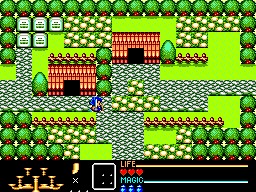 That’s essentially how things went for the first few years of the 1990s, too. The big two action-RPG releases in 1990 were SNK’s Crystalis and SEGA’s Golden Axe Warrior. The latter game was released on the SEGA Master System and was another one of SEGA’s unsuccessful attempts to create their own Zelda-like franchise. It’s quite fun for what it is, but the Master System was already on life support by the time it released. The most noteworthy thing about it is how rare it is. Crystalis was one of the better action-RPGs in the NES’s library. Its setting seemed unique at the time, though in hindsight it was obviously riffing hard off of the setting from Hayao Miyazaki’s Nausicaa film. It’s said that Crystalis had some part in inspiring Secret of Mana, and if that’s the case, it’s certainly an important link in the chain.
That’s essentially how things went for the first few years of the 1990s, too. The big two action-RPG releases in 1990 were SNK’s Crystalis and SEGA’s Golden Axe Warrior. The latter game was released on the SEGA Master System and was another one of SEGA’s unsuccessful attempts to create their own Zelda-like franchise. It’s quite fun for what it is, but the Master System was already on life support by the time it released. The most noteworthy thing about it is how rare it is. Crystalis was one of the better action-RPGs in the NES’s library. Its setting seemed unique at the time, though in hindsight it was obviously riffing hard off of the setting from Hayao Miyazaki’s Nausicaa film. It’s said that Crystalis had some part in inspiring Secret of Mana, and if that’s the case, it’s certainly an important link in the chain.
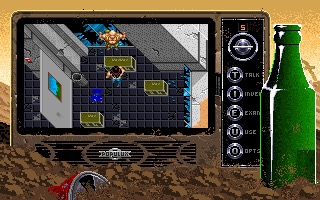 In the West, there weren’t any games that would be remembered all that well in the long run in 1990. Ultima architects Origin Systems took another swing at the genre with Bad Blood, a post-apocalyptic spin on Times of Lore. Like that game, it was directed by a pre-Wing Commander Chris Roberts, but unlike that game, it wasn’t all that successful. Points for the setting, at least. Speaking of developers yet to find their claim to fame, the other interesting action-rpg of that year came from the developer that would go on to be called DreamForge. DarkSpyre is something of an action-RPG roguelite that was released on MS-DOS and Amiga. Looking back on it, it’s tragic how close they were to hitting on a very lucrative idea. Unfortunately, close only counts in horseshoes and hand grenades, friends.
In the West, there weren’t any games that would be remembered all that well in the long run in 1990. Ultima architects Origin Systems took another swing at the genre with Bad Blood, a post-apocalyptic spin on Times of Lore. Like that game, it was directed by a pre-Wing Commander Chris Roberts, but unlike that game, it wasn’t all that successful. Points for the setting, at least. Speaking of developers yet to find their claim to fame, the other interesting action-rpg of that year came from the developer that would go on to be called DreamForge. DarkSpyre is something of an action-RPG roguelite that was released on MS-DOS and Amiga. Looking back on it, it’s tragic how close they were to hitting on a very lucrative idea. Unfortunately, close only counts in horseshoes and hand grenades, friends.
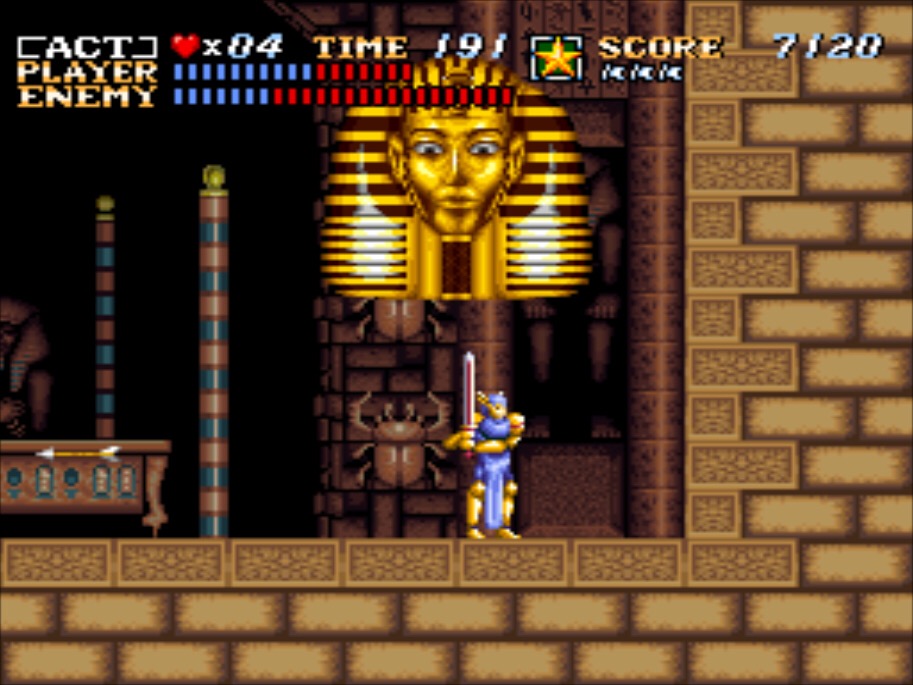 While it’s not an action-RPG, it’s worth noting that 1990 saw the release of Actraiser on Nintendo’s new 16-bit hardware in Japan. Actraiser was an action game with a SimCity/Populous-style city-building component. It was developed by a company named Quintet, which had been formed by some ex-Falcom members who had been responsible for the bulk of the first two games in the Ys series. While the Actraiser games mostly left the RPG stuff out, Quintet’s other original games in the 1990s were almost all action-RPGs, some of the best of the era. I’ve written a ton about these games on my personal site if you want to read about them in more detail.
While it’s not an action-RPG, it’s worth noting that 1990 saw the release of Actraiser on Nintendo’s new 16-bit hardware in Japan. Actraiser was an action game with a SimCity/Populous-style city-building component. It was developed by a company named Quintet, which had been formed by some ex-Falcom members who had been responsible for the bulk of the first two games in the Ys series. While the Actraiser games mostly left the RPG stuff out, Quintet’s other original games in the 1990s were almost all action-RPGs, some of the best of the era. I’ve written a ton about these games on my personal site if you want to read about them in more detail.
The biggest news of 1991 was the debut of one of the most beloved Japanese action-RPG series in the world. Final Fantasy Adventure, aka Mystic Quest or Seiken Densetsu, later remade as Sword of Mana and later still as Adventures of Mana, made its debut on the Game Boy handheld from Nintendo. While it was a pretty naked attempt at riffing on Zelda, it added a number of the RPG elements Square’s fans had come to expect from their games. The Mana series would have its ups and downs over the years, with probably more of the latter than the former. Yet it still exists, and among its many misguided or outright lousy entries, there are some real gems that shine brightly. The first game is one of them.
 Synergistic Software had done a few games with some clumsy action combat on home computers, mostly based around Arthurian legends. In 1991, they got their hands on the Conan license and produced a game that more or less followed along those lines. Conan: The Cimmerian is a sentimental old favorite of mine. The combat is rough and slow, so its action credentials are seriously suspect, but as licensed games go, this was a really enjoyable one. I can’t say it was all that influential, but I suspect many of you have some good memories of this one, too. Before we move on from this year, I should note that the newest Zelda game, Link to the Past, also released this year. Reverting back to the formula of the first game, it jettisoned the RPG elements found in the second game, settling into the action-adventure groove it would occupy from here on out.
Synergistic Software had done a few games with some clumsy action combat on home computers, mostly based around Arthurian legends. In 1991, they got their hands on the Conan license and produced a game that more or less followed along those lines. Conan: The Cimmerian is a sentimental old favorite of mine. The combat is rough and slow, so its action credentials are seriously suspect, but as licensed games go, this was a really enjoyable one. I can’t say it was all that influential, but I suspect many of you have some good memories of this one, too. Before we move on from this year, I should note that the newest Zelda game, Link to the Past, also released this year. Reverting back to the formula of the first game, it jettisoned the RPG elements found in the second game, settling into the action-adventure groove it would occupy from here on out.
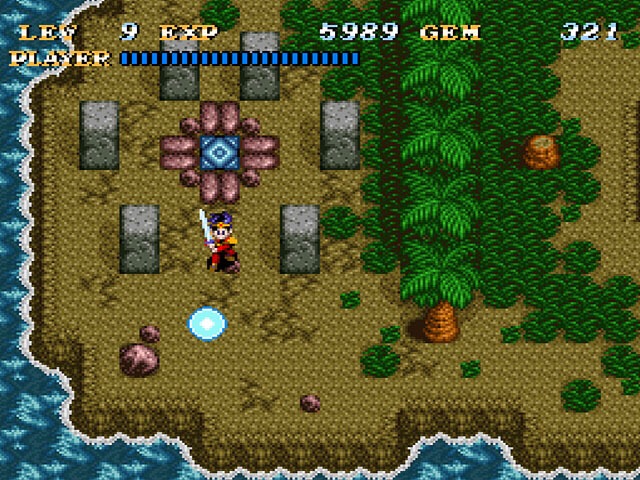 In 1992, Quintet released their first action-RPG Soul Blazer for Nintendo’s 16-bit console. It’s a little too straightforward even for its time, but it has some really interesting narrative elements. Over on the SEGA side of things, developer Climax was preparing to release their first original title for SEGA’s 16-bit hardware. Landstalker is an isometric take on Zelda, and much like that game, it’s pretty light on actual RPG elements. Later games from Climax would flirt with more RPG mechanics, however. The most important release of 1992 was Ultima Underworld from Origin Systems and Blue Sky Productions. It took the semi-real time action of Dungeon Master and made it actual real time, with smoothly-scrolling mazes and action-based combat. It helped pave the way for future first-person action-RPGs.
In 1992, Quintet released their first action-RPG Soul Blazer for Nintendo’s 16-bit console. It’s a little too straightforward even for its time, but it has some really interesting narrative elements. Over on the SEGA side of things, developer Climax was preparing to release their first original title for SEGA’s 16-bit hardware. Landstalker is an isometric take on Zelda, and much like that game, it’s pretty light on actual RPG elements. Later games from Climax would flirt with more RPG mechanics, however. The most important release of 1992 was Ultima Underworld from Origin Systems and Blue Sky Productions. It took the semi-real time action of Dungeon Master and made it actual real time, with smoothly-scrolling mazes and action-based combat. It helped pave the way for future first-person action-RPGs.
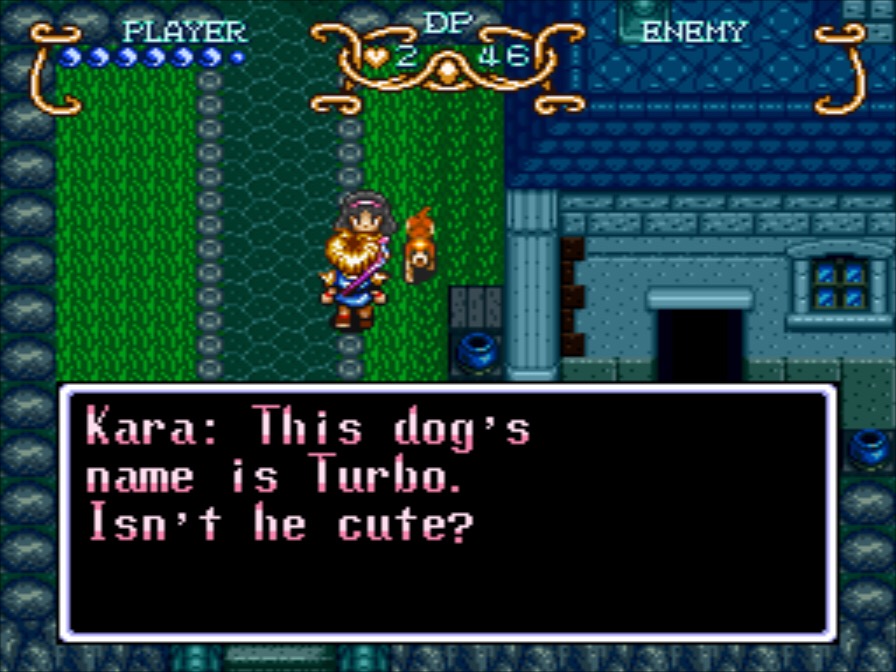 Quintet was back at it in 1993 with the next game in their Heaven and Earth series, Illusion of Gaia. It’s an interesting game with a lot to say, even if it doesn’t quite know how to say it at times. Falcom had hit some hard times around this period, but Ys 4 finally made it out the door on a couple of different platforms. In the arcades, Capcom had decided to add a little RPG chocolate to its beat-em-up peanut butter with the release of Dungeons & Dragons: Tower of Doom. It and its sequel are fondly remembered for their attempts at adding some longevity and permanence to a market that wasn’t particularly well-suited for such things.
Quintet was back at it in 1993 with the next game in their Heaven and Earth series, Illusion of Gaia. It’s an interesting game with a lot to say, even if it doesn’t quite know how to say it at times. Falcom had hit some hard times around this period, but Ys 4 finally made it out the door on a couple of different platforms. In the arcades, Capcom had decided to add a little RPG chocolate to its beat-em-up peanut butter with the release of Dungeons & Dragons: Tower of Doom. It and its sequel are fondly remembered for their attempts at adding some longevity and permanence to a market that wasn’t particularly well-suited for such things.
The big gun of 1993, historically speaking, is Square’s follow-up to Final Fantasy Adventure. Secret of Mana remains the most popular and generally well-liked installment in the Mana series to date. The mechanics are deep without venturing too far into the esoteric territory the later games in the series would be famous for, and the action is as solid as the series would ever get. There isn’t much of substance to the story, but the game’s multiplayer mode ensured that many brothers, sisters, and friends could make their own twists. Plus, you get to battle a monster Santa who turned evil because not enough people believed in him anymore. How many other games have that? For many console players, Secret of Mana remains the ideal form of the action-RPG genre.
 The 16-bit console era was winding down in 1994, and it shows in terms of the software releases. On Nintendo’s platform, we can see an assortment of somewhat minor titles like the console version of Brandish, the puzzle-heavy Brain Lord, and Kemco’s Dragon View. Yes, Kemco is here. Kemco is always around somewhere. On the Genesis, Ancient’s Arabian Nights-themed Beyond Oasis was turning heads and selling quite a few copies, while the Genesis version of Shadowrun and the Zelda-like Crusade of Centy earned small but loyal followings.
The 16-bit console era was winding down in 1994, and it shows in terms of the software releases. On Nintendo’s platform, we can see an assortment of somewhat minor titles like the console version of Brandish, the puzzle-heavy Brain Lord, and Kemco’s Dragon View. Yes, Kemco is here. Kemco is always around somewhere. On the Genesis, Ancient’s Arabian Nights-themed Beyond Oasis was turning heads and selling quite a few copies, while the Genesis version of Shadowrun and the Zelda-like Crusade of Centy earned small but loyal followings.
Over on PC, two very big titles from Origin Systems yielded opposite results. The team behind Ultima Underworld, by now known as Looking Glass Technologies, worked together with producer Warren Spector of Origin Systems to create System Shock, a first-person action-RPG with strong sci-fi and horror elements. While the game wasn’t a commercial success, it is extremely well-remembered and has been cited as a source of inspiration for numerous games that followed. Ultima 8: Pagan, on the other hand, was a commercial success, but its new action and platforming elements didn’t go over well with the overall fanbase. The series would soon see far worse, but Ultima certainly didn’t benefit from adding in action elements, at least not in this way.
 I would be remiss if I didn’t mention the 1994 arrival of The Elder Scrolls: Arena. Bethesda was a tiny fish at the time, and the game looks positively modest compared to the later behemoths the developers would produce. Still, a tip of the hat to Arena for taking the Ultima Underworld concept out of the smaller dungeon systems and out into an open world. There are some disagreements about whether to consider these games and their ilk action-RPGs when they sort of became the de facto example of modern CRPGs. At least as far as I’m concerned, however, these are definitely action-RPGs.
I would be remiss if I didn’t mention the 1994 arrival of The Elder Scrolls: Arena. Bethesda was a tiny fish at the time, and the game looks positively modest compared to the later behemoths the developers would produce. Still, a tip of the hat to Arena for taking the Ultima Underworld concept out of the smaller dungeon systems and out into an open world. There are some disagreements about whether to consider these games and their ilk action-RPGs when they sort of became the de facto example of modern CRPGs. At least as far as I’m concerned, however, these are definitely action-RPGs.
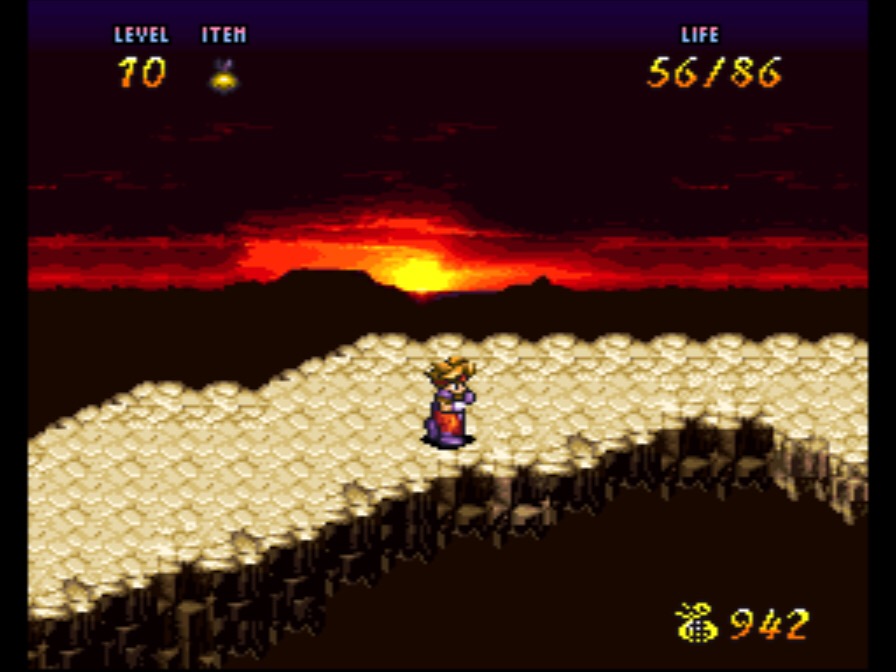 Nintendo’s 16-bit platform wasn’t going out without a fight, which was good for the company given its successor wasn’t due for release until the back half of 1996. Sadly, while there were many excellent Super NES games released in America in 1995, not many of them were action-RPGs. Elsewhere, it was a different story. The magnificent Terranigma was released in Japan and Europe. It is Quintet’s masterpiece, and one of my favorite games of the 16-bit generation. More significant was the release of the first game in Namco’s Tales series, Tales of Phantasia. These games seem like normal JRPGs until you get into combat, where the winner is decided through side-scrolling action battles. You can unleash your character’s moves from a menu or by a number of handy shortcuts using the directional pad and buttons. The Tales series remains strong to this day, and its action chops have only solidified over time.
Nintendo’s 16-bit platform wasn’t going out without a fight, which was good for the company given its successor wasn’t due for release until the back half of 1996. Sadly, while there were many excellent Super NES games released in America in 1995, not many of them were action-RPGs. Elsewhere, it was a different story. The magnificent Terranigma was released in Japan and Europe. It is Quintet’s masterpiece, and one of my favorite games of the 16-bit generation. More significant was the release of the first game in Namco’s Tales series, Tales of Phantasia. These games seem like normal JRPGs until you get into combat, where the winner is decided through side-scrolling action battles. You can unleash your character’s moves from a menu or by a number of handy shortcuts using the directional pad and buttons. The Tales series remains strong to this day, and its action chops have only solidified over time.
While it might seem like a booby prize of sorts, America did get one exclusive action-RPG that Japan didn’t. Square’s Secret of Evermore was developed by a brand new team in the United States. Obviously more than a little inspired by Secret of Mana, the game was an unusual mix of that game with a clear Western influence. At the time, fans largely rejected the game as it was believed Square canceled the overseas release of Secret of Mana 2/Seiken Densetsu 3 for its sake. It’s too bad, because Secret of Evermore is a pretty decent game with a lot of good ideas. There were definitely flaws to address, but I think it deserved better than it got.
That’s where we’re going to leave things for now. The next year, 1996, proved to be a big one for the genre. Not only were the 32-bit consoles coming into full swing, but the year also went out with the PC release of one of the most successful, important games in the genre. Make sure to check in next time when we see the fallout from opening the devil’s door. You can look forward to that continuation in a few weeks. As for me, I’ll be back next week to introduce the next game for our RPG Reload Play-Along feature. You might want to make some time on your calendar. Thanks for reading!
Next Week’s Reload: The August RPG Reload Play-Along

